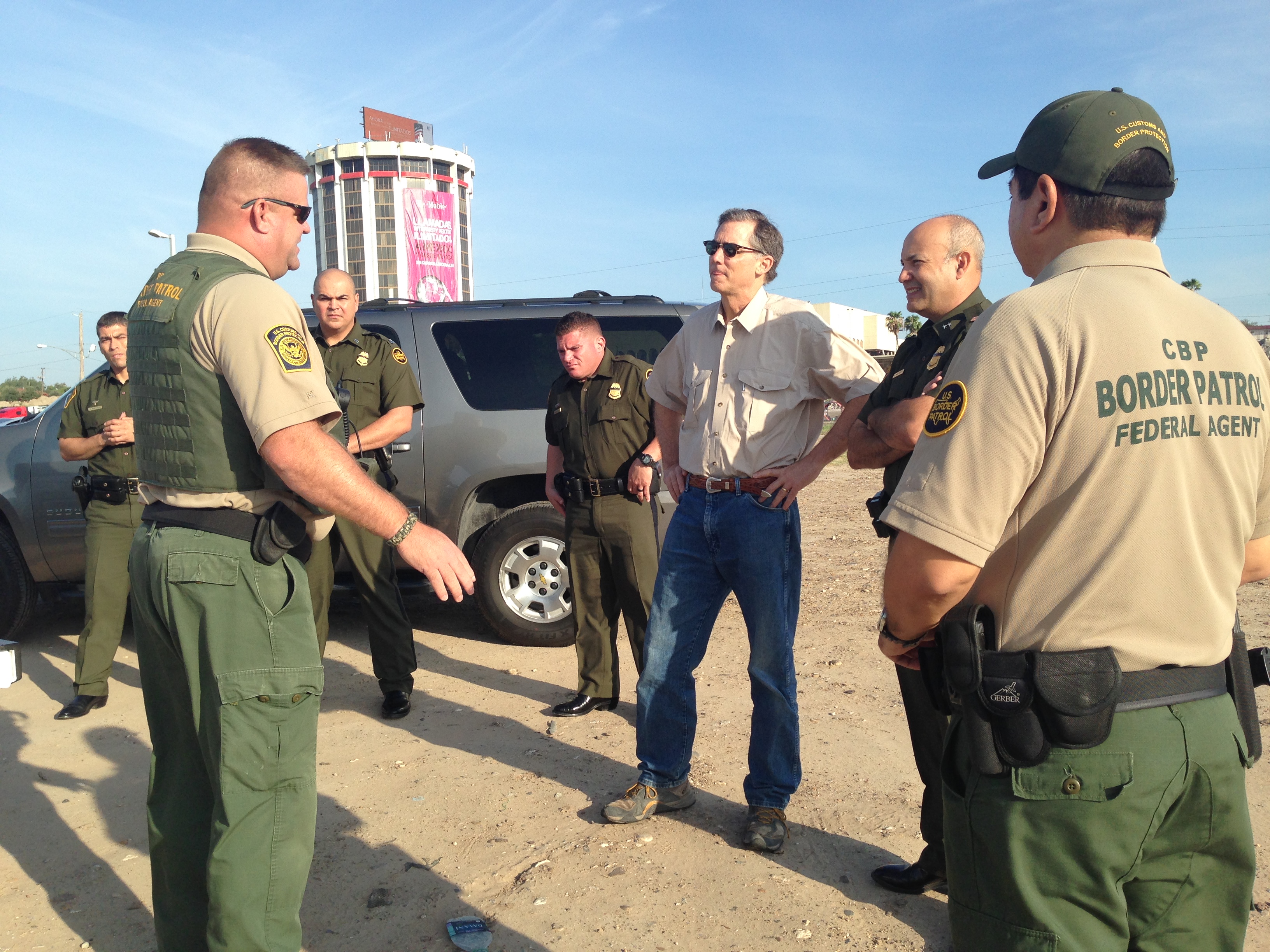|
|
Dear Friends,
In the last few weeks, I've received a lot of questions about the issues surrounding construction of a physical barrier along the southwest border between the United States and Mexico. Since 2015, I’ve traveled to the border four times to study the needs of law enforcement officers and border security agencies. Let me share with you what I've learned from the front lines.
 |
| Rep. Hill meeting with CBP agents at the southwest U.S. border. |
Many of the questions I've received suggest that President Trump initiated the idea of building a wall or some type of border barrier. Nothing could be further from the truth.
The construction of a physical southwest border barrier has been underway since the early 1990's. Double fence construction with a parallel roadway, accompanied by cameras and lighting, have been used at major border crossing areas between the ports of entry. For example:
Border construction began in San Diego, California in 1992. Today it covers more than 50 miles.
El Paso, Texas – Built in 1993 – 131 miles
Yuma, Arizona – Built in 2005 – 126 miles
Laredo, Texas – Built in 2008 – 54 miles
Rio Grande Valley – Built in 2008 – 60 miles |
In San Diego, Yuma, and El Paso--Customs and Border Patrol has seen more than 90% reduction in illegal crossings between the ports of entry due to the presence of a physical barrier.
 |
| Rep. Hill touring the southwest border near Laredo, Texas in 2015. |
In total, since the 1990's, over 700 miles of physical border barrier have been constructed. The reason it's been constructed is because it works.
Over the years, both Democrats and Republicans have vigorously supported this physical barrier construction because it aids our Customs and Border Patrol agents in preventing drug smuggling and human trafficking. Of course, there are many other critical elements of border security beyond just the physical barrier. In addition, we need to upgrade our screening and surveillance technology, increase our manpower, and reform our immigration laws.
These have been bipartisan goals dating back to the George H.W. Bush Administration. In fact, President Bill Clinton devoted part of his 1995 State of the Union speech to enacting stronger immigration reforms and securing our southwest border. Click below to watch his remarks.
More recently, President George W. Bush signed into law the Secure Fence Act which was supported by Senate Minority Leader, Chuck Schumer.
From a strategic point of view, a physical barrier allows our border patrol and law enforcement to shape the terrain. Obviously, where the barrier ends there are vulnerable spots. However, a physical barrier allows law enforcement to concentrate its resources on these weaker spots, while minimizing personnel where a barrier already exists. This makes monitoring our border more efficient and less costly.
I hope this helps you to understand my perspective on the need for a physical barrier and why it's a central component of our homeland security. I have also attached some articles of interest that may be helpful as well:
USA TODAY: Border Walls Work. Yuma, Arizona Sector Proves It (8/22/2017)
NEW YORK POST: This Town is Proof That Trump's Wall Can Work (1/13/2018)
NATIONAL REVIEW: The Baseless, Trite Arguments Against Walls (1/8/2019)
Thank you for taking time to keep up with the work I'm doing on your behalf. If I can be of any assistance to you or your family, please reach out to my office at (501) 324-5941 or Hill.House.Gov.

Representative French Hill |
| |
| |
|
|
|
|
|
|




